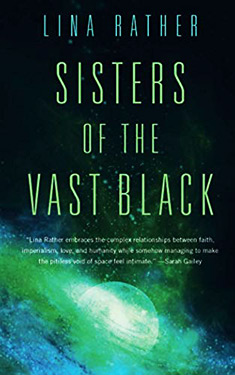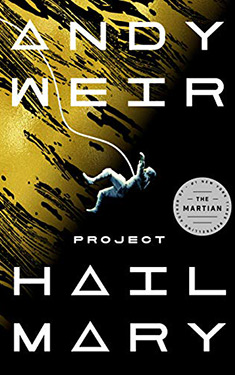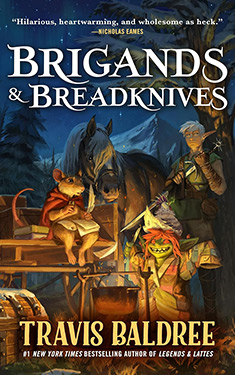Lina Rather
Completed 11/28/2025, Reviewed 11/28/2025
4 stars
I had a tough time getting into this “nuns in space” novella. It’s only 160 pages, but it took me the first sixty to get into the story. Then I was completely sucked in. I have a fondness for rebellious nuns, and specifically, radical lesbian ex-nuns with guitars, having been friends with several throughout my life. They take the Gospel message seriously, providing good works and focusing on peace and justice. This completely replaced the image I had of nuns from my experience in Catholic school as mostly being castrating and abusive, perverting the Gospel for conformity and punishment. The story began feeling conformist but jumped into a battle against an oppressive new government colluding with the Church for galactic control.
The book begins with introductions to the sisters of the Order of St. Rita on their living, breathing space convent, the Our Lady of Impossible Constellations. They travel in space providing services to those in need. Despite their call to live open, honest lives, they all have secrets. Mother Superior has a dark past associated with the destructive revolution on Earth. Now she hides aboard the Our Lady in a vow of silence so as not to give away her true identity. Sister Gemma, the ship’s maintenance-biologist, has a secret love on another ship. Other nuns have varying gifts and inner demons as well. They are all arguing about the theological implications of allowing the ship to follow its own instincts to mate. Some of the nuns want to preserve its virginity because it is a consecrated entity. Amidst this contact, they answer a call from a new colony to perform some marriages and baptism and to bless the colony. Some time after their visit, they get a desperate call from that same colony that they have been infected by the horrible plague and need help. However, a priest sent by the new pope to bring the Order under rein refuses to allow it, opting for proselytization over service, sending them into a conflict about following the Gospel message or kowtowing to the whims of the oppressive Church-backed government.
Yes, that was a long plot summary. For a novella, it packs a lot of information. I think that may be part of why it took so long to get into it. It also took a while to get into the idea that the nuns were living inside a living creature genetically developed to fly through space and house humans. Quite the conceit to wrap one’s head around. And then to be dumped in the middle of a heated debate about allowing the ship to reproduce, it kind of made my head explode. But it all came together after the first third when I finally suspended disbelief. I also got into the more when the secrets of the nuns were made more clear and more specific. And yes, at least one of the nuns is lesbian 😊. That made me happy.
Mother Superior was a very interesting character. It takes a long time to unravel her past, considering that she only communicates through sign language and is even spare with that. Somehow, she escaped the massive bombing of London at the beginning of the revolution that radically changed life on Earth. And while dealing with being head of this Order in a state of disarray, she seems to be experiencing the onset of Alzheimer’s. Her mind gets unstuck in time and she panics, forcing her translator to figure out what’s going on with the slurred signing. But you get the sense that she was a powerful force back on Earth and has been using that skill as the leader of the Order.
It is through Sister Gemma that we get the complete picture of the spaceship creature. It has interesting little details, like the moss that grows around standing feet to help stabilize the person in zero-g and acceleration. There’s also an intimate moment between Gemma and the ship when she goes into its reproductive area to observe the eggs being produced and to read the communications with her girlfriend from another ship. It is because of the ovulating ship, Gemma falling in love, and Mother Superior’s Alzheimer’s that we learn of the conscience conflicts of the other featured nuns in the story. This personal conflict sets the stage for the decision they all must make whether to answer the call of the plague infected colony or follow the new orders of Rome by acceding to the new priest on board.
I ultimately really liked this book. It is the in-person book club selection for December. Being so short, I may try to reread it before book club to get the full impact of its beginning. I give this book four stars out of five. It felt really good to read about nuns making the radical choice to follow Jesus’ message rather than the Church’s nationalist mandate. It warmed my heart during this time of spiritual despair over current events.







